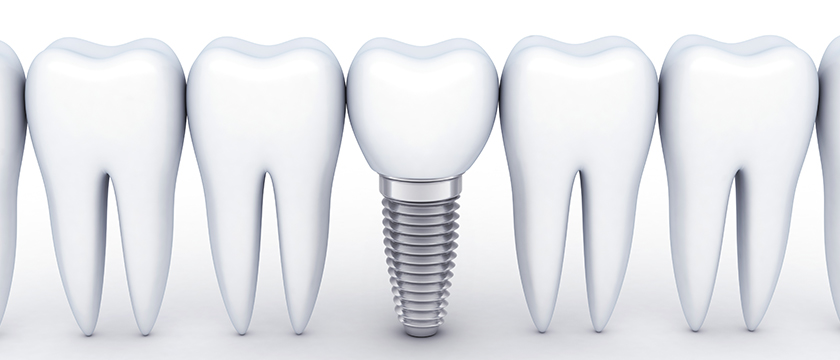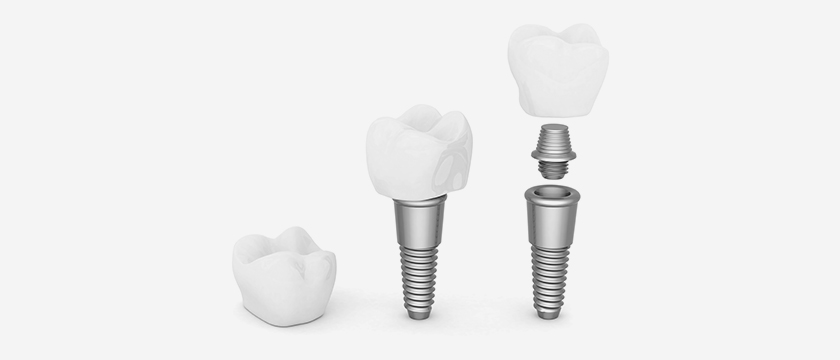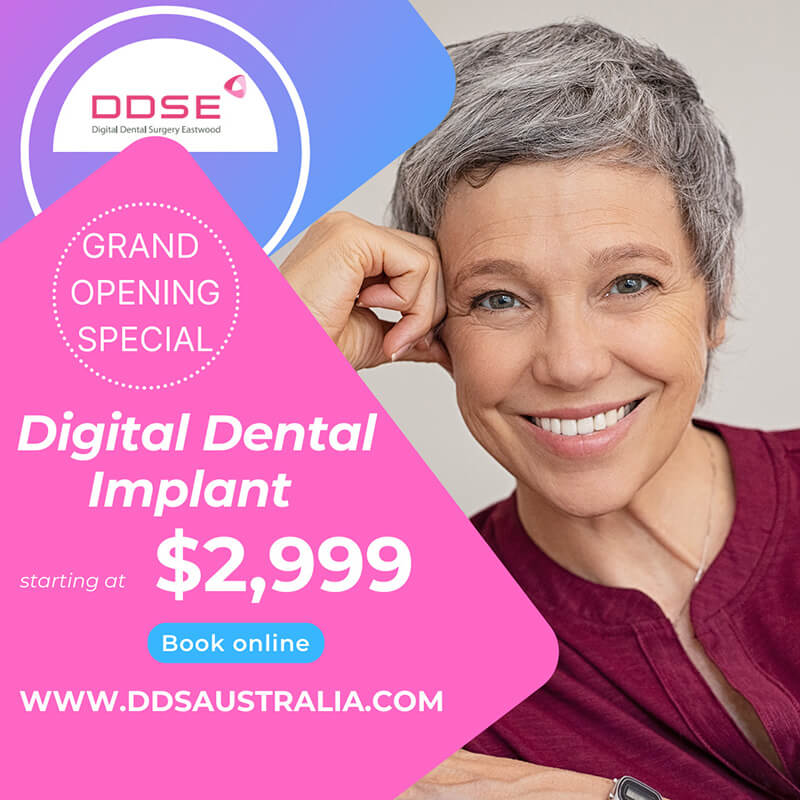Nowadays, most dentists offer dental implant restorations as part of their treatments or services and rightly so, as implants are seen as the gold standard of missing teeth replacement. However, in terms of dental implants cost to the patient, implant-based restorations have always been more expensive than other types of non-surgical teeth replacement such as dentures and/or bridges. So perhaps the obvious question would be, why would a patient pay even more for digital dental implants?
Before we answer this, it’s worth taking a look at what digital dental implants are.
With digital dental implants, however, computers – or rather – computerisation, plays a defining role. By combining multiple CT scanning with computer-aided implant technology, much of the risk factor involved in the placing of conventional implants is eliminated. Let’s take a closer look at how this digitised process works…
In addition, the 3D overview of the patient’s mouth gives the dentist several variations on how the tooth/teeth will look once inserted. These can be adjusted and improved until the perfect representation is formed. Finally, once the representation is agreed, the bespoke implant can then be made.
As you can imagine, the technology used to digitally produce accurate and lifelike dental prosthetics is extensive and as a result, this is what makes digital dental implants cost more than their conventional counterparts.
Digital Dental Implant Cost – The Advantages of Paying More
One of the biggest advantages of digital dental implants over traditional implant methods is that because exacting and accurate plans are made of an individual’s mouth, digital implants can be used in more complex cases where non-digital implantation may be too risky. This is carried out with a greater chance of a successful outcome.

However, despite these obvious advantages, is the increase in dental implants cost really worth it for the patient?
Digital Dental Implant Cost – Looking at the Long-Term Picture
When people are confronted with the choice of digital vs conventional implant restorations, many will understandably focus on the dental implants cost. However, the fact remains that a digital dental implant is more than just a modernised but expensive version of a conventional implant. It’s also the most precise! If you think about that for a second, placement accuracy has many advantages for the patient, both in short term and long term gains. These include:
Speedier treatment
Unlike conventional dental implants where the main bulk of the effort is focused on the surgical phase of the treatment, with digital dental implants, most of the work is carried out beforehand at the back end, during the planning stages. As a result, factors like implant location, trajectory, and accuracy can all be predicted, meaning that the placement side of the procedure is relatively straightforward in most cases. Ultimately, this means faster treatments with less surgery time.
Just to give you an idea, a conventional implant can traditionally take around 100 minutes to place whereas digital dental implants can be placed in around 30 minutes and sometimes less, depending upon the treatment type.
Flapless, keyhole surgery
Traditionally, dental implants cost patients in recovery time as well as surgery time. Typically, the gum is opened up to place the implant into the bone. Once placed, the gum is then sewn up and the patient is left to recover while any remaining bone tissue integrates with the titanium root. In many cases, after several months the gum is opened up once more to expose the titanium post so that the connecting abutment can then be attached. More recovery time then ensues before finally, the artificial crown can be placed.
Conversely, digital dental implants involving state-of-the-art, computer-guided systems, utilise a keyhole surgery approach. Here’s how it works…
A small hole, just large enough to fit the implant is drilled through the gum and into the bone using the computer-generated surgical guides. As a result, it isn’t necessary to cut the flap of the gum to expose the bone. Because surgery is absolutely minimal, it means that no sutures are needed and therefore any recovery time is greatly reduced.
Lower risk approach
Okay, so while no surgical procedure is ever completely without risk, buying into the whole ethos of digital implants and the way that they’re placed, means that much of that risk is eliminated. Computer-guided methods mean that any hole drilled through the gum and into the jaw is perfectly positioned to allow for the exact trajectory and depth of the implant to within a fraction of a millimetre. When the implant is then placed into these holes and secured down into the jaw, it’s designed to be a tight but perfect fit. Ultimately, this means that there’s little-to-no chance of any implant movement during the critical bone fusion (osseointegration) phase, making the whole procedure less of a risk.
Lower dental implant costs overall
A further advantage of computer-guided accuracy and something you might not have thought about is the fact that digital implants may be able to make optimal use of any remaining bone. Therefore time-consuming, invasive, and costly bone grafting treatments might not always be necessary on every occasion, saving you money in the long term.
Perhaps though, the best cost-saving exercise of all is one of longevity. While traditional dental implants can also last several decades depending upon a number of factors, digital dental implants are initially placed with less risk of failure. At the very least, accuracy eliminates the problematic issue of malpositioning, but in addition, digital computer-guided dental implants can provide better stability at the early stages which is vital for effective bone fusion to take place. Again this increases the chances of longer lasting restorations.

With This In Mind, How Do You Cover The Costs Of Digital Dental Implants?
It’s no secret that the very best digital dental implants cost several thousand dollars to fit, yet there are huge benefits, many of which are highlighted here, to having them. So while there is a decision to be made between cost vs benefit, there are several ways – with a little bit of planning and forethought of course – that you can make digital dental implants more affordable for you. Let’s take a look…
Take out a financial payment plan
In the grand scheme of things, financial payment plans aren’t anything new. In fact, they’re as old as the hills. Yet, for many dentists, they are a relatively recent addition. As more and more dentists see the benefits of supplying dedicated payment plans, for patients it means that the cost of expensive treatment such as digital dental implants can be spread over a period of time.
Dental insurance plans
In Australia, historically, there have been very few stand-alone insurers providing cover for dental work only. So for many people, taking out private medical health cover is the best option to enable them to take care of their teeth. With this in mind there are varying types of coverage that include either:
- General dental work or,
- Major dental work
These types of dental insurance are usually viewed as a bolt-on coverage you can add to your health insurance as part of an ‘extras‘ package. While general dental work covers treatments and services like dental check-ups, scaling, cleaning, and fillings, major dental work covers you for treatments like dental emergencies, root canal treatment, and wisdom teeth extraction. It may also cover you for orthodontic treatments including treatments of the jaw and facial irregularities. However, be aware that some insurers specifically exclude dental implants because of the dental implant cost factor.
That said, there are insurers who will cover you for the cost of digital dental implants treatment so ensure that it’s mentioned under the fine print. You may want to do a Google search for ‘Australian dental insurers covering dental implants‘ and see what comes up.
Digital Dental Implant Costs – The Bottom Line
The good news is that more and more dentists are offering dedicated payment plans that allow implant patients to spread the cost of payment. Ultimately this means that people can undergo implant-based treatment when they need it most, without having to be concerned with upfront costs. So when pricing is no longer the overriding factor, digital dental implants really are the real deal. Here’s why…
Digital dental implants raising the bar of what can be achieved
While conventional dental implants are a reliable fix, digital dental implants raise the bar in terms of what can be achieved. Computerisation allows the dentist to perform virtual mock surgeries so that when it comes to the actual event, surgery is performed in the optimum and safest manner possible for the patient. This quick, precise, no-incision process is more exact, more comfortable, and faster than conventional implantation methods and because flapless, keyhole surgery is carried out, recovery time can, more often than not, be measured in days rather than in weeks.
Fewer visits equal greater efficiency
In addition, the whole digital dental implant procedure can be carried out from start to finish in just three visits. Whereas, conventional dental implants can take anywhere between five and seven. Moreover, if the patient is eligible for immediate loading, then chair time can be limited to just two visits making it a truly efficient treatment for those with missing teeth.
Ever-changing technology means dental implant costs may become more affordable
As the latest advancements continue to streamline dental implant workflow, the implant surgeon, restorative dentist, and lab technician of the future will be better connected digitally. As such, cases can be better planned and reviewed collaboratively, allowing more restorations to be manufactured under the same roof, ultimately making them available at a lower cost to the patient.
Dental Implant Cost – The Key Takeaway
Digital implant dentistry as it stands is the pinnacle of modern dentistry for both patient and dentist. While dental implant costs are currently higher than any other form of restorative dental treatment in the short-term, in the long-term, patients can ensure a more predictable and safer outcome with efficient and comfortable treatments along the way.
Here at the Digital Dental Implants Institute, we’re proud to be at the cutting edge of digital dentistry here in Sydney. Our team are highly experienced and highly trained in all aspects of implant dentistry. So, if you’re looking for a long-term missing tooth replacement that will greatly enhance both the form and function of your smile, then come and book a no obligation consultation with our team. Call today to schedule your appointment on Sydney CBD: (02) 8294 5812 or Gosford: (02) 8294 8656. We can help to give you the smile you’ve always wanted.







My teeth are rotting and have holes and beyond fixable. I figured I would need dental implants but how expensive are they? I’ve been researching which ones to consider and I really like the “all on four”, then I saw the price on here and I gasped! I guess I asked. Well, considering all the benefits you’ll get from it I can say the cost is justified. Too bad though my Medicare don’t cover it. I should have taken out a private medical health cover.
Not a deal breaker at all. I have 4 of them. Although they really are expensive, they’re brilliant. And just like what this post cited, they are made of titanium, porcelain and other durable materials so they’re expected to last. Just make sure they’ll be done by a good dentist. Anyway, I think the cost is gonna come down sooner or later as they’re becoming mainstream. Crossing my fingers for anyone who aims to have them.
I have multiple missing teeth. Since I have a hard time chewing food and speaking because of it, I was thinking about undergoing dental implants. However, the idea of the surgery gives me so much anxiety. Good thing I learned all about digital implants from here. They may be more costly than traditional dental implants but they cause minimal incision and less pain which will make the process a lot less stressful for me.